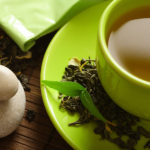By Bonnie Jenkins, Advanced Natural Medicine
For many of us, our meals come with an unwanted side order: heartburn. So we avoid common triggers like onions and spicy foods hoping to prevent the burning pain caused by stomach acid rising up into our esophagus. But according to a surprising new review by investigators at Stanford University, what you eat and drink has absolutely no effect on your heartburn symptoms.
Of course, other studies have found that a variety of diet and lifestyle changes can help prevent heartburn and effectively ease symptoms once they’ve hit. One recent study of 371 volunteers found that eating fat, especially saturated fat, were more likely to suffer from symptoms – especially if they were overweight. On the flip side, the researchers found that those eating a fiber-rich, low-fat diet rarely experienced heartburn. So who’s right? And is this new review just a ploy to boost sales of pharmaceutical heartburn remedies?
Heartburn 101
While almost everyone has heartburn now and then, 44 percent of Americans experience symptoms at least once a month. Sufferers describe heartburn as a burning pain behind the breastbone that may move up toward the neck and throat, and is sometimes accompanied by a bitter or acidic taste in the back of the mouth. When heartburn has you in its grip, the symptoms can be so severe they even mimic a heart attack. But, no matter how it feels, if you suffer from heartburn at least once a week, you may have gastroesophageal reflux disease, or GERD, a disorder that allows the contents of the stomach to flow back up into the esophagus.
The problem with GERD is that this stomach acid can erode the lining of the esophagus in about five percent of those with the condition and, if left untreated, may lead to esophageal cancer. GERD can also aggravate asthma symptoms or cause a chronic cough, sore throat or laryngitis.
But, even if you don’t have GERD, ordinary heartburn is no picnic. Sure you can quench the fire with over-the-counter antacid, but long-tern use can alter bowel habits, leading to diarrhea or constipation. Even worse, the overuse of calcium-containing antacids like Tums can lead to kidney stones.
What about proton-pump inhibitors like Nexium or Prilosec? It turns out that these popular drugs increase the risk of hip fractures. A new University of Pennsylvania study shows that people over the age of 50 who take the standard dose of a proton-pump inhibitor for more than one year have a 44 percent higher risk of breaking a hip. Taking higher-than-normal doses dramatically increases the risk. In fact, long-term, high-dose use of these drugs ups the risk of hip fracture by a whopping 245 percent!
MD Exposes the Hidden Danger to Your Eyes

When your eyesight starts to fail, it's a real problem. Suddenly you can't go to the grocery store... you can't get to the doctor if you have an emergency... you can't meet your friends for dinner…
Your "regular" doctor doesn't have time to keep up with the latest research. And the same goes for eye doctors. They go to school to learn how to fit you for glasses and contacts, but have no way of preventing the damage and loss of eyesight that threatens your freedom and independence.
Let me show you something that explains a LOT about how your eyes work.
In my FREE Special Report, I'll show you a HUGE, untapped resource for your eyes that safely and naturally restores clear, effortless eyesight.
Click here to get started...
Feed the Fire
Despite the latest research that questions whether diet and lifestyle changes can actually help treat heartburn, these tactics still remain the first line of defense against symptoms. A widely acknowledged aggravator is extra weight since it puts pressure on the stomach and relaxes the esophagus. Even being in the high range of your normal weight can increase your risk of heartburn by about 40 percent.
When it comes to food triggers, the key is to find out what aggravates your heartburn – and then avoid it. Some foods, like chocolate, peppermint, coffee and alcohol, relax the lower part of the esophagus, allowing stomach acid to flow back into the esophagus; Other foods commonly linked to heartburn include garlic, onions, tomato-based foods, spicy foods and fatty foods. Start by eliminating these foods and see if it helps. Keep a food journal so you get an accurate picture of what foods help and what hurts. If these common foods aren’t the culprit, check the size of your portions since large meals put pressure on your stomach and can prompt an attack..
If heartburn is keeping you up at night, make sure you don’t eat within three hours of going to bed. You can also try sleeping on your left side. Research suggests that people who sleep on their left-side suffer less nighttime heartburn. Sleeping on an incline can also ease symptoms. Many nutritionists recommend using blocks to raise the head of your bed six inches.
One Last Thing …
You’ve eliminated your personal heartburn triggers, eating fewer fatty foods and watching your portion size, but still the burn continues. It’s time for extra help.
Licorice is an effective alternative to antacids. Unlike drugs which inhibit acid production, licorice works by stimulating the stomach’s natural protective mechanism. Specifically, this soothing herb protects the mucous membranes lining the digestive tract by increasing the production of mucin, a compound that guards against the adverse effects of stomach acid. Licorice has also been shown to encourage the formation of mucosal cells because of its ability to increase blood flow to mucosal tissue.
How well does it work? One double-blind trial reported that people with significant stomach discomfort who took a licorice supplement showed an average improvement of 78 percent compared to only 34 percent of those taking a placebo. Other studies show that taking 760 mg. of licorice three times a day is just as effective as the popular prescription drug Tagamet. One word of caution though: make sure you get a licorice supplement that has had the glycyrrhizin removed. Glycyrrhizin, which occurs naturally in licorice root, has cortisone-like effects and can cause high blood pressure and water retention. Instead, look for chewable de-glycyrrhizinated licorice (DGL) to avoid these side effects. Chew two 250 to 500 mg. DGL tablets at the onset of symptoms or 15 to 20 minutes before meals as a preventive measure.
The World's Quickest Solution for Ending Prostate and Urinary Misery
This has recently been revealed to be one of the only real breakthroughs in prostate health.
The seeds of a strange fruit (sometimes called "Chinese Apples") hold powerful phytonutrients that are a revolution in prostate health.
In fact, UCLA and Veterans Administration research have now proved this to be true.
Not only that, but it may be the worlds quickest solution for ending prostate misery.
Simply stated, these phytonutrients represent a huge step beyond beta sitosterol, saw palmetto, and other phytosterols alone.
Simply click HERE if you want to have fast prostate relief...restful, uninterrupted sleep...no more constant "urges to go"...enhanced virility...and optimal prostate support for life.
Like most diseases, prevention is the best medicine. Following a healthy diet and maintaining a healthy weight can help prevent heartburn. But if GERD is already present, dietary adjustments, exercise and soothing herbs can help make it manageable.
This Just In …
I recently got interesting e-mail from a reader concerning infrared saunas. Frankly, I had never heard of this type of sauna, so I decided to investigate. Here’s what I found: Unlike conventional saunas which use heated steam, an infrared sauna heats its occupants with heaters that emit far infrared radiation. This infrared radiation, which is similar to the radiation produced by the sun, heats the skin directly without warming the air. Infrared sauna can benefit a number of conditions. According to a study at Nishi Kyusyu University in Japan , this type of sauna can relieve chronic pain. Other studies show that infrared sauna therapy can help chronic fatigue and may even improve chronic heart failure. It’s also a great way to detox your body because infrared radiant heat penetrates more deeply and stimulates the tissues involved in eliminating toxins from the body. According to some naturopathic doctors, repeated use of an infrared sauna slowly restores skin elimination. Toxic chemicals and metals can be removed faster than with any other method.
This type of sauna is safe for most people providing you follows a few simple rules. When starting out, remain inside no longer than 30 minutes at a time. After the sauna, rest lying or sitting for 10 minutes to help the body eliminate dead cells and other debris. Drink mineralized water before and after the sauna, and add extra sea salt or kelp granules to your diet to replace minerals lost through sweating. Make sure your bowels move regularly, as sauna therapy will increase elimination.
What about taking supplements after a vigorous sauna? It can be a good idea, especially if you take a multi-vitamin multi-mineral supplement. You might also want to take detoxifying herbs like milk thistle or artichoke leaf to enhance the effects of the sauna. Just refrain from taking supplements like cascara or senna that act like laxatives.
There are also some precautions: Use the sauna with supervision if you have a chronic condition – and check with your doctor is you have multiple sclerosis, hyperthyroidism, hypertension or a serious heart condition. And pregnant women should never, ever, use any type of sauna.
Saunas can be a wonderful way to detoxify and renew your body from the inside out. And now that I’ve discovered the health benefits of infrared saunas, all I can say is, sign me up!
References:
El-Serag HB, Satia JA, Rabeneck L. “Dietary intake and the risks of gastro-oesophageal reflux disease: a cross sectional study in volunteers.” Gut. 2005;54:11-17.
Goso Y, Ogata Y, Ishihara K, Hotta K. “Effects of traditional herbal medicine on gastric acid.” Biochemistry & Physiology. 1996;113C:17–21.
Kaltenbach T, Crockett S, Gerson LB. “Are lifestyle measures effective in patients with gastroesophageal reflux disease? An evidence-based approach.” Archives of Internal Medicine. 2006;166:965-71.
Masuda A, Koga Y, Hattanmaru M, et al. “The effects of repeated thermal therapy for patients with chronic pain.” Psychotherapy and Psychosomatics. 2005;74:288-294.
Reed PI, Davies WA. Controlled trial of a carbenoxolone/alginate antacid combination in reflux oesophagitis. Current Medical Research Opinion 1978;5:637–644.
Yang Y, Lewis JD, Epstein S, et al. “Long-term Proton Pump Inhibitor Therapy and Risk of Hip Fracture.” Journal of the American Medical Association. 2006;296:2947-2953.






